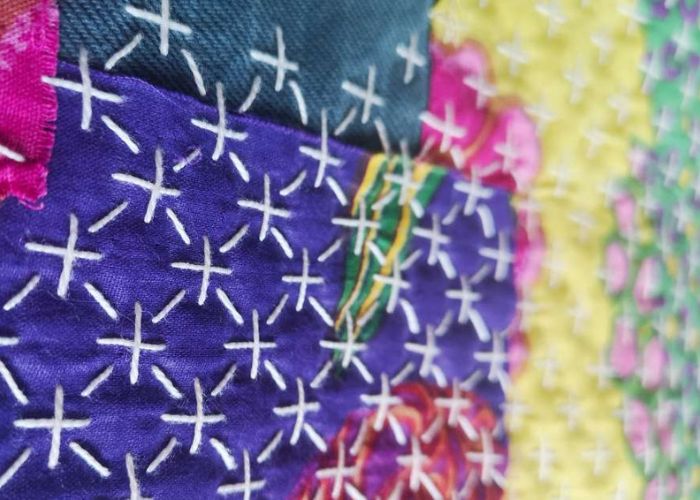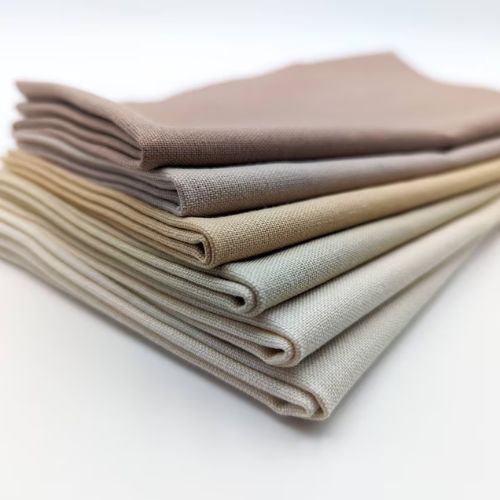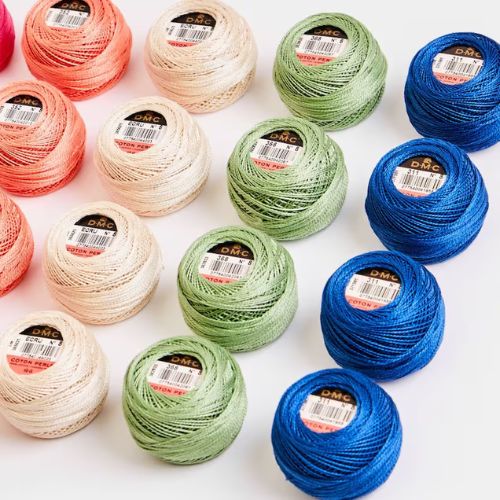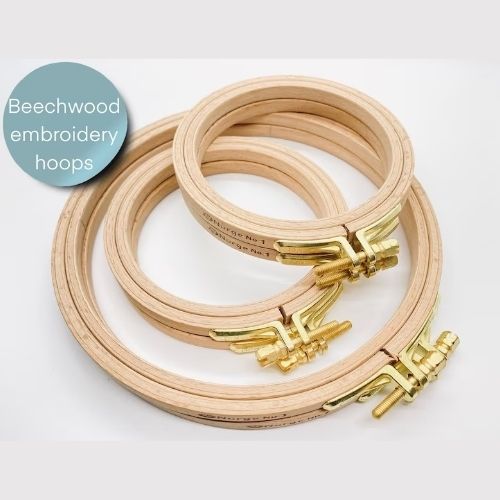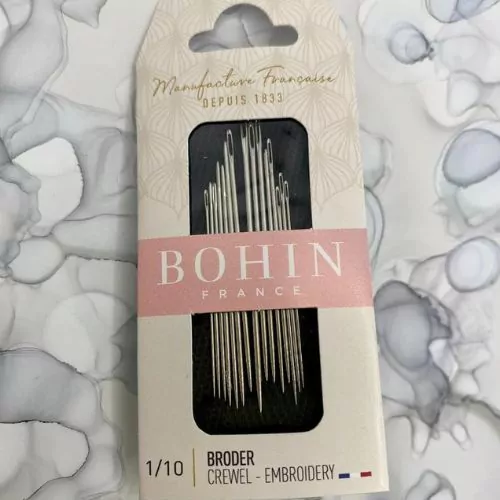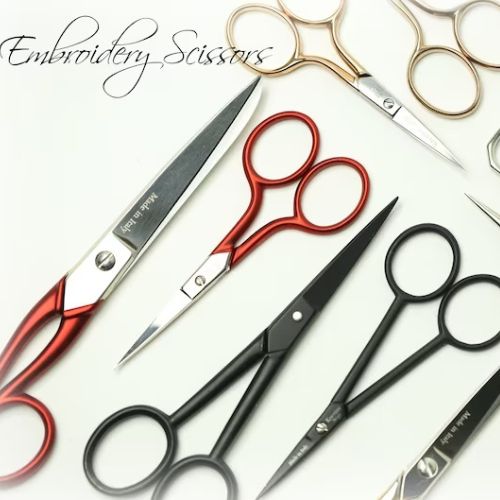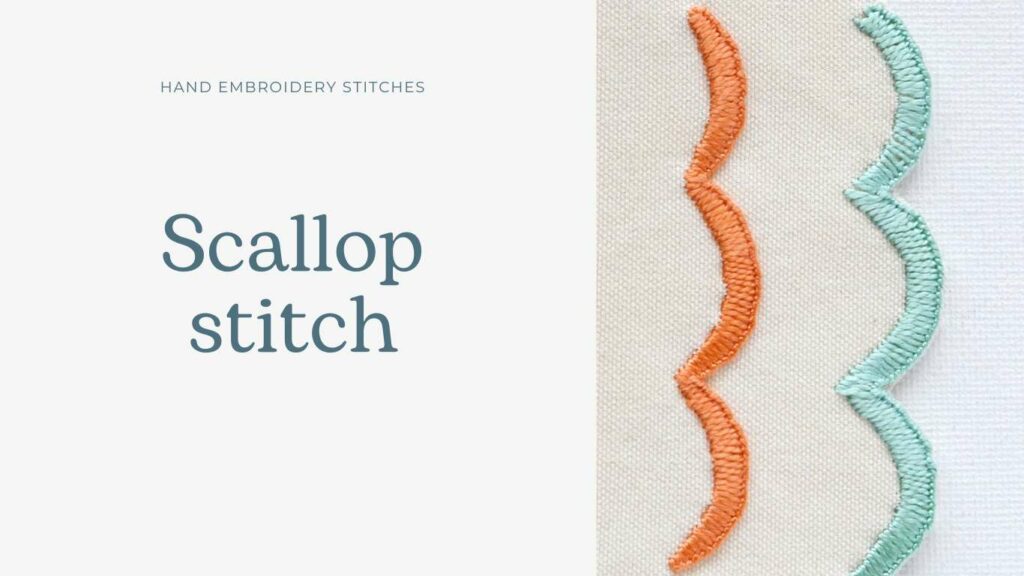
Scallop Stitch Embroider
Scallop stitch combines the Running stitch and Blanket stitches positioned close to each other. First, we embroider a base with Running stitches and then cover them with a Blanket stitch. This combination of the stitches gives the edge stability and creates a slightly raised stitch.
Other names of the stitch
This stitch is also called Blanket stitch Scallops or Scallop edging.
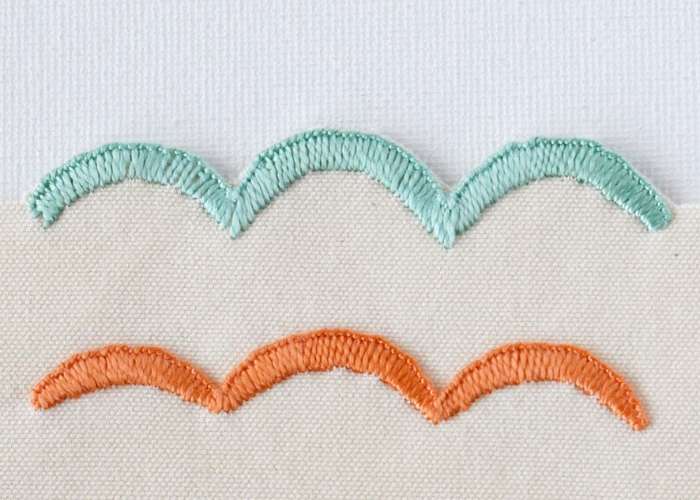
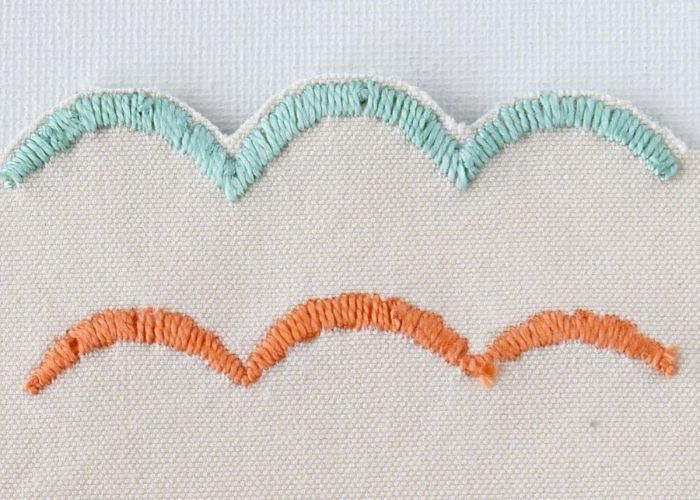
Applications Of The Scallop Stitch
This stitch is mainly used for decorative edging – you can apply it to the tablecloth, fabric napkins, or the edges of garments. The excess fabric is cut away after the stitches are applied when used for edging.
Besides that, we can use this embroidery stitch for decorative purposes in surface embroidery.
If you aim for more raised stitches, you can fill the space between the running stitches with a dense seed stitch.
More Stitches From The Blanket Stitch Family
Learn how to embroider Scallop Stitch
Follow the step-by-step tutorial with detailed photos below, and you will learn the Scallop Stitch quickly. If you are a visual learner, watch a video lesson in the tutorial or on the Practical Embroidery YouTube channel to learn this hand embroidery stitch faster.
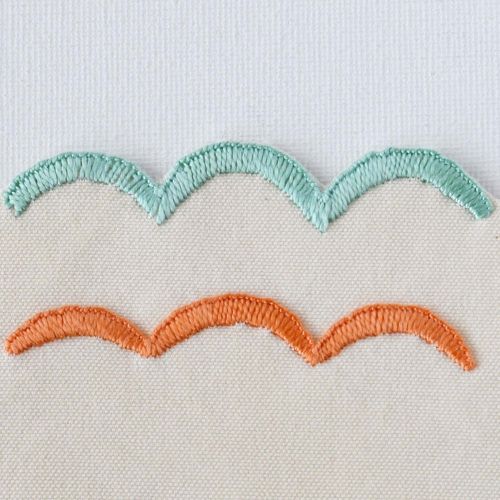
How to embroider Scallop Stitch
Step-by-step hand embroidery tutorial
Instructions
1. First, mark the half-moon shapes for the scallops on the fabric.
2. Embroider on the inner edge of the marking lines with tiny running stitches. Make a row of running stitches for each marking line.
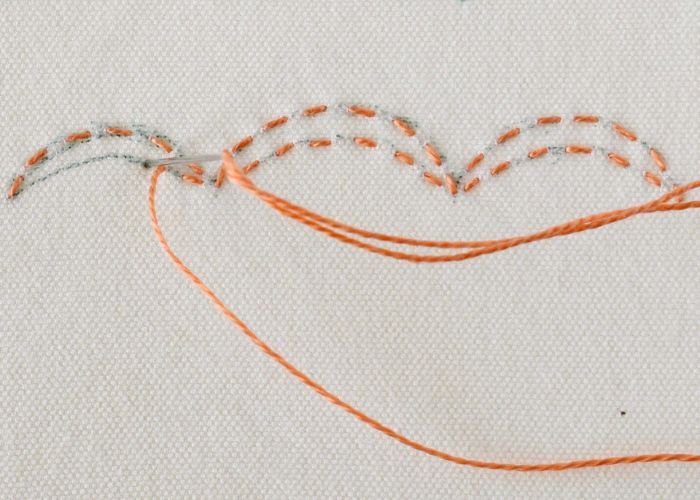
3. Now add blanket stitches. Follow the marking lines and make sure all the running stitches are placed under the blanket stitches. Place blanket stitches close to each other to cover the fabric and the running stitches fully.
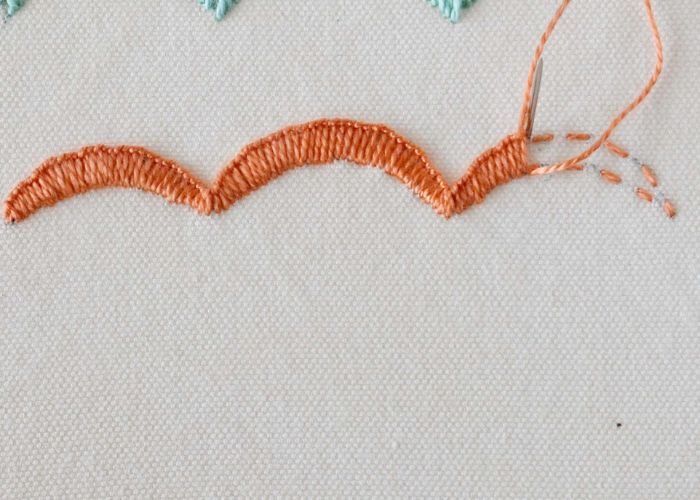
4. If you want to use Scallop stitch for edging – cut away the external fabric when all the stitches are done. Be careful not to cut the threads.
Video tutorial
Tools and materials I used for this sampler
Disclaimer. To cover the cost of creating free embroidery patterns and video tutorials for this blog, I do sometimes link to products. Please assume these links are affiliate links. If you choose to buy through my links then THANK YOU – it will make it possible for me to keep doing this.
What’s next?
If you’re in the mood to explore more hand embroidery stitches, check out the Stitches and Techniques page for the list of other fantastic stitches available on my blog. From timeless classics to modern twists, a whole world of stitches is waiting for you to explore and master. So, grab your hoop and needle, and let’s stitch our way to creative bliss!
Don’t miss a thing!
Follow me on YouTube, Instagram, Facebook, and Pinterest. Or why not subscribe to Practical Embroidery newsletter and get embroidery tips straight to your inbox every few weeks?
Need More Guidance?
The top 10 hand embroidery stitches to learn is a free online course created for beginners.
